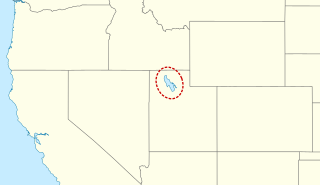
Bigfoot, also commonly referred to as Sasquatch, is a large, hairy mythical creature said to inhabit forests in North America, particularly in the Pacific Northwest. Bigfoot is featured in both American and Canadian folklore, and since the mid-20th century has grown into a cultural icon, permeating popular culture and becoming the subject of its own distinct subculture.

Cryptozoology is a pseudoscience and subculture that searches for and studies unknown, legendary, or extinct animals whose present existence is disputed or unsubstantiated, particularly those popular in folklore, such as Bigfoot, the Loch Ness Monster, Yeti, the chupacabra, the Jersey Devil, or the Mokele-mbembe. Cryptozoologists refer to these entities as cryptids, a term coined by the subculture. Because it does not follow the scientific method, cryptozoology is considered a pseudoscience by mainstream science: it is neither a branch of zoology nor of folklore studies. It was originally founded in the 1950s by zoologists Bernard Heuvelmans and Ivan T. Sanderson.

The chupacabra or chupacabras is a legendary creature, or cryptid, in the folklore of parts of the Americas. The name comes from the animal's purported vampirism—the chupacabra is said to attack and drink the blood of livestock, including goats.

The Loch Ness Monster, also known as Nessie, is a mythical creature in Scottish folklore that is said to inhabit Loch Ness in the Scottish Highlands. It is often described as large, long-necked, and with one or more humps protruding from the water. Popular interest and belief in the creature has varied since it was brought to worldwide attention in 1933. Evidence of its existence is anecdotal, with a number of disputed photographs and sonar readings.

In several Bantu mythologies, mokele-mbembe is a mythical water-dwelling entity that is believed to exist in the Congo River Basin. Variously described as a living creature or a spirit, mokele-mbembe descriptions vary widely based on conflicting purported eyewitness reports, but it is often described as a large quadrupedal herbivore with smooth skin, a long neck, and a single tooth or horn, much like the extinct lineage known as sauropods.

The skunk ape is a large and hairy human-like mythical creature purported to inhabit the forests and swamps in the southeastern United States, most notably in Florida. It is often compared to, synonymous with, or called the "cousin" of Bigfoot, a prominent subject within North American popular culture.

The Mongolian death worm is a creature alleged to exist in the Gobi Desert. Investigations into the legendary creature have been pursued by amateur cryptozoologists and credited academics alike, but there has been little evidence found to support its existence. It can be considered a Cryptid or a mythological animal.
Karl Shuker is a British zoologist, cryptozoologist and author. He lives in the Midlands, England, where he works as a zoological consultant and writer. A columnist in Fortean Times and contributor to various magazines, Shuker is also the editor-in-chief of the Journal of Cryptozoology, which began in November 2012.

Storsjön is the fifth largest lake in Sweden, with an area of 464 km2 (179 sq mi) and a greatest depth of 74 m (243 ft). It is the largest lake in central Sweden, located in the province of Jämtland in modern Jämtland County. From Storsjön runs the river Indalsälven and the lake contains the major island Frösön. The city of Östersund is located on the east shore of the lake, opposite Frösön.
In American folklore, the snallygaster is a bird-reptile chimera originating in the superstitions of early German immigrants later combined with sensationalistic newspaper reports of the monster. Early sightings associate the snallygaster with Frederick County, Maryland, especially the areas of South Mountain, Braddock Heights and the Middletown Valley. Later reports would expand on sightings encompassing an area to include Central Maryland, Berkeley County, West Virginia, and the Washington, DC, metro area.
In Armenian folklore, the Lake Van Monster is a lake monster said to live in Lake Van in eastern Turkey.

The North Shore Monster, sometimes referred to as "Old Briney," purportedly inhabits the Great Salt Lake in Utah. Descriptions of the monster vary, but it is most commonly described as having a crocodile-like body and the head of a horse.
Tahoe Tessie is a cryptid said to inhabit the depths of Lake Tahoe, a lake that straddles the border between California and Nevada. Reports of Tessie date back to the mid-19th century, and over time, the creature has become a well-known part of local folklore.

Mothman, in West Virginian folklore, is a humanoid creature reportedly seen in the Point Pleasant area from November 15, 1966, to December 15, 1967. The first newspaper report was published in the Point Pleasant Register, dated November 16, 1966, titled "Couples See Man-Sized Bird ... Creature ... Something". The national press soon picked up the reports and helped spread the story across the United States. The source of the legend is believed to have originated from sightings of out-of-migration sandhill cranes or herons.

The coexistence of avian dinosaurs (birds) and humans is well established historically and in modern times. The coexistence of non-avian dinosaurs and humans exists only as a recurring motif in speculative fiction, because in the real world non-avian dinosaurs have at no point coexisted with humans.

The Mugwump is a lake monster which has been alleged to live in Lake Timiskaming, on the border of the Canadian provinces of Ontario and Quebec.











